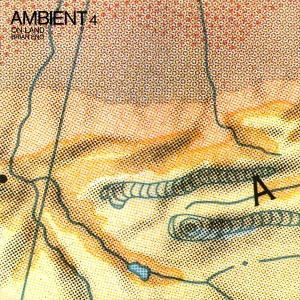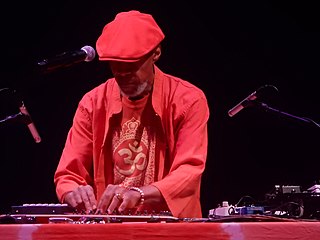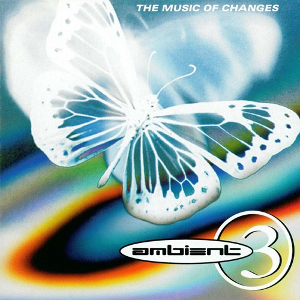
Ambient music is a genre of music that emphasizes tone and atmosphere over traditional musical structure or rhythm. It is often "peaceful" sounding and lacks composition, beat, and/or structured melody. It uses textural layers of sound that can reward both passive and active listening and encourage a sense of calm or contemplation. The genre is said to evoke an "atmospheric", "visual", or "unobtrusive" quality. Nature soundscapes may be included, and the sounds of acoustic instruments such as the piano, strings and flute may be emulated through a synthesizer.

Zithers are a class of stringed instruments. Historically, it could be any instrument of the psaltery family. In modern terminology, it is more specifically an instrument consisting of many strings stretched across a thin, flat body, the topic of this article.

Another Green World is the third solo studio album by Brian Eno, released by Island Records on 14 November 1975. The album marked a transition from the rock-based music of Eno's previous releases toward the minimalist instrumentals of his late 1970s ambient work. Only five of its fourteen tracks feature vocals, a contrast with his previous vocal albums.

Ambient 1: Music for Airports is the sixth studio album by Brian Eno, released in 1978 by Polydor Records. It is the first of Eno's albums released under the label of ambient music, a genre of music intended to "induce calm and a space to think" while remaining "as ignorable as it is interesting". While not Eno's earliest entry in the style, it is credited with coining the term.

The Appalachian dulcimer is a fretted string instrument of the zither family, typically with three or four strings, originally played in the Appalachian region of the United States. The body extends the length of the fingerboard, and its fretting is generally diatonic.

The trapezoidal yangqin is a Chinese hammered dulcimer, likely derived from the Iranian santur or the European dulcimer. It used to be written with the characters 洋琴, but over time the first character changed to 揚, which means "acclaimed". It is also spelled yang ch'in. Hammered dulcimers of various types are now very popular not only in China, but also Eastern Europe, the Middle East, India, Iran, and Pakistan. The instruments are also sometimes known by the names "santoor" and "cymbalom". This instrument had an influence on the Thai classical instrument, known as Khim (ขิม).

Discreet Music is the fourth studio album by Brian Eno, and the first released under his full name. The album is a minimalist work, with the titular A-side consisting of one 30-minute piece featuring synthesizer and tape delay. The B-side features three variations on Canon in D Major by Johann Pachelbel, performed by the Cockpit Ensemble and conducted by Gavin Bryars.

Ambient 2: The Plateaux of Mirror is a 1980 studio album by Harold Budd and Brian Eno. A work of ambient music, it is the second installment of Eno's Ambient series, which began in 1978 with Ambient 1: Music for Airports. Ambient 2 consists mainly of minimalist composer Budd playing improvisational piano in soundscapes produced by Eno. The album received positive reviews and led to Budd and Eno collaborating again for the sonically similar The Pearl (1984).

Ambient 4: On Land is the eighth solo studio album by Brian Eno, released in March 1982 by EG Records. It was the final edition in Eno's ambient series, which began in 1978 with the release of Ambient 1: Music for Airports. The album was released to critical acclaim, and is, along with the rest of the ambient series, recognised as a landmark album in the history of the ambient music genre.

Apollo: Atmospheres and Soundtracks is a studio album by the British musician and producer Brian Eno, the Canadian producer Daniel Lanois, and Brian Eno's brother, composer Roger Eno. It was released on 29 July 1983 by EG Records. The music was originally written for For All Mankind, a documentary film by Al Reinert about the Apollo program, though the film was not released until 1989. The score was written and performed by the trio.

The Pearl is the second collaborative studio album by Harold Budd and Brian Eno, released in August 1984 by Editions EG and produced by Eno and Daniel Lanois in Hamilton, Ontario. The Pearl is similar to Budd and Eno's previous collaboration, Ambient 2: The Plateaux of Mirror (1980), consisting mostly of subtly treated piano textures, but with more pronounced electronic treatments and nature recordings. The album has been well received by music critics, and is considered by some as a landmark work in ambient music.

Thursday Afternoon is the tenth solo studio album by Brian Eno, released in October 1985 on EG Records. Consisting of one 60-minute eponymous composition, it is the rearranged soundtrack to an 80-minute video production of the same title made in 1984.

Another Day on Earth is the twenty-second solo studio album by Brian Eno, released on 13 June 2005 in the UK and Europe through Hannibal Records, and on 14 June 2005 in the US. The album predominantly recorded and mixed on Macintosh software, using Logic Pro, over a period of four years.

Laraaji is an American multi-instrumentalist specializing in piano, zither and mbira. His albums include the 1980 release Ambient 3: Day of Radiance, produced by Brian Eno as part of his Ambient series.

Music for Films is the seventh solo studio album by Brian Eno, released in September 1978 on EG Records. His third release of experimental electronic material, it is a conceptual work intended as a soundtrack for imaginary films, although many of the pieces had already appeared in actual films. It charted at #55 on the UK.

The Shutov Assembly is the twelfth solo studio album by Brian Eno, released on 10 November 1992 on Opal via Warner Bros. Records. One of Eno's ambient albums, it was reissued in 2014 with a second disc with bonus tracks. It is considered the follow-up to Nerve Net, which was released that same year.

Music for Films III is the third entry in Brian Eno's "Music for Films" series. It was the first in the series to include music from artists other than Brian Eno, including Roger Eno, Michael Brook, Laraaji, and Harold Budd, among others, with Brian Eno involved with the production of all tracks.

Music for Civic Recovery Centre is the nineteenth solo studio album by Brian Eno, released in 2000. Part of Eno's Quiet Club series of Installations, is Eno's third release that has a sole composition.

Ambient 3: Music Of Changes is a 1994 compilation album released by Virgin Records as part of its Ambient series. The compilation was issued as a double CD.

Brian Peter George Eno, also mononymously known as Eno, is an English musician, songwriter, record producer and visual artist. He is best known for his pioneering contributions to ambient music and electronica, and for producing, recording, and writing works in rock and pop music. A self-described "non-musician", Eno has helped introduce unconventional concepts and approaches to contemporary music. He has been described as one of popular music's most influential and innovative figures. In 2019, he was inducted into the Rock and Roll Hall of Fame as a member of Roxy Music.




















